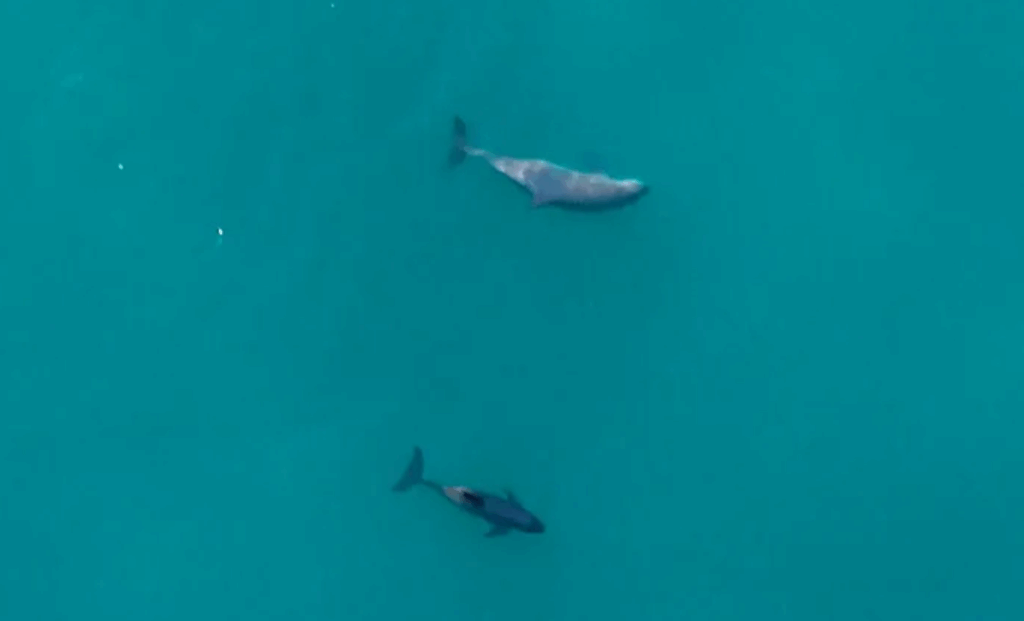For the first time in years, conservationists have reported sightings of new vaquita calves in the northern Gulf of California — a rare glimmer of hope for a species teetering on the edge of extinction. The discovery comes from the latest population survey led by Sea Shepherd Conservation Society and Mexican authorities. While the tiny cetaceans remain critically endangered, the observation of healthy newborns has reignited cautious optimism among scientists and environmental groups.
The Silent Return Of The Vaquita
The vaquita (Phocoena sinus), the smallest porpoise in the world, has spent decades on the brink of disappearing entirely. Once numbering more than 500 individuals in the late 1990s, their population plummeted to around 10 by 2018 due to illegal fishing and gillnet entanglement in Mexico’s Upper Gulf of California. Yet, in the most recent monitoring effort, researchers recorded between seven and ten individuals, including newborn calves — a fragile but meaningful sign of resilience.
The 2025 survey, detailed in a joint report by Sea Shepherd Conservation Society and the Mexican government, relied on a combination of acoustic detection systems and long-range “Big Eyes” binoculars to locate the elusive mammals without disturbing them. Carried out between May and September, the operation brought together scientists, local fishers, and international conservation agencies to monitor an area once overrun by illegal gillnetting.

“This monitoring allows us to adjust our work strategy, to reinforce actions in precise areas in order to achieve greater vigilance and protection,” said Marina Robles García, Mexico’s Undersecretary of Biodiversity and Environmental Restoration. The survey not only confirmed the ongoing survival of the species but also provided valuable data to refine enforcement strategies and conservation priorities.
A Complex Battle For Survival
Despite the encouraging news, experts caution that the vaquita’s survival remains precarious. The animals’ only known habitat — the northernmost section of the Gulf of California — is still subject to illegal fishing activities that target totoaba, a large fish prized for its swim bladder in black markets. Vaquitas, unable to detect the fine-meshed gillnets, often become entangled and drown.
“But it also tells us several things: that the vaquita is still there, that it persists, that the downward trend has not continued, that there are even individuals we had not seen for several years—clearly spending time in other areas where we have not been monitoring—and that it continues to reproduce,” continued Robles García.
Her words reflect the cautious optimism shared by conservationists. The fact that calves were observed — after a year with no recorded births — suggests that conditions in the Gulf may be stabilizing, at least temporarily. The discovery underscores the importance of enforcement zones and community-led fishing alternatives, which are helping to limit the impact of illegal operations in the region.
The Power Of Persistence
Efforts to protect the vaquita have often felt like a race against time, but the latest results demonstrate that even small populations can show remarkable resilience when given a chance. The continued monitoring by Sea Shepherd and Mexican authorities has proven essential in identifying the animals’ movement patterns and adjusting protection strategies in real time.
“The fact that a species continues to reproduce and appears healthy is the best indicator of its life, of its condition as a species, but also the best invitation to maintain our efforts, our hope, and our joint work,” added Robles García. This statement encapsulates the spirit driving conservationists forward — that endurance, vigilance, and collaboration remain the most powerful tools against extinction.
As global attention turns toward the fragile ecosystem of the Gulf of California, the birth of new vaquita calves offers both a warning and a promise: nature’s recovery is possible, but only if humanity commits to safeguarding it.

